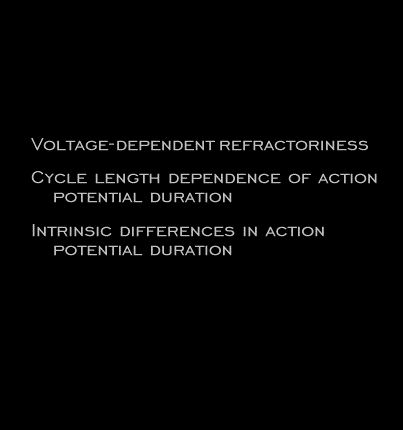
[OMIT “AND TIME” FROM THE TOP ROW IN THE GAPHIC ] The dependence of aberrant conduction on the cycle lengths of both the aberrantly conducted premature beat and the beat preceding the aberrantly conducted beat demonstrate the three important electrophysiological concepts shown here.
